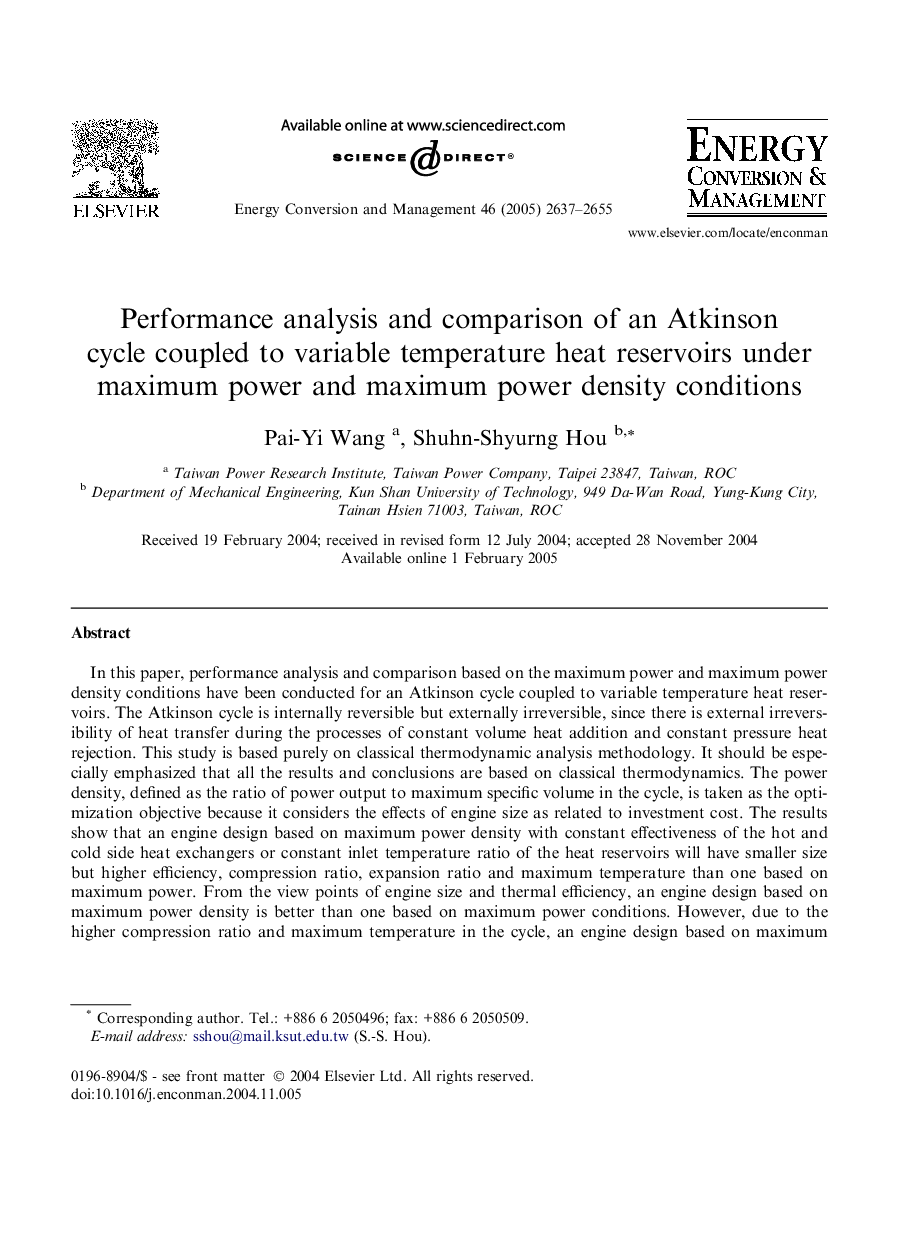| Article ID | Journal | Published Year | Pages | File Type |
|---|---|---|---|---|
| 762748 | Energy Conversion and Management | 2005 | 19 Pages |
In this paper, performance analysis and comparison based on the maximum power and maximum power density conditions have been conducted for an Atkinson cycle coupled to variable temperature heat reservoirs. The Atkinson cycle is internally reversible but externally irreversible, since there is external irreversibility of heat transfer during the processes of constant volume heat addition and constant pressure heat rejection. This study is based purely on classical thermodynamic analysis methodology. It should be especially emphasized that all the results and conclusions are based on classical thermodynamics. The power density, defined as the ratio of power output to maximum specific volume in the cycle, is taken as the optimization objective because it considers the effects of engine size as related to investment cost. The results show that an engine design based on maximum power density with constant effectiveness of the hot and cold side heat exchangers or constant inlet temperature ratio of the heat reservoirs will have smaller size but higher efficiency, compression ratio, expansion ratio and maximum temperature than one based on maximum power. From the view points of engine size and thermal efficiency, an engine design based on maximum power density is better than one based on maximum power conditions. However, due to the higher compression ratio and maximum temperature in the cycle, an engine design based on maximum power density conditions requires tougher materials for engine construction than one based on maximum power conditions.
